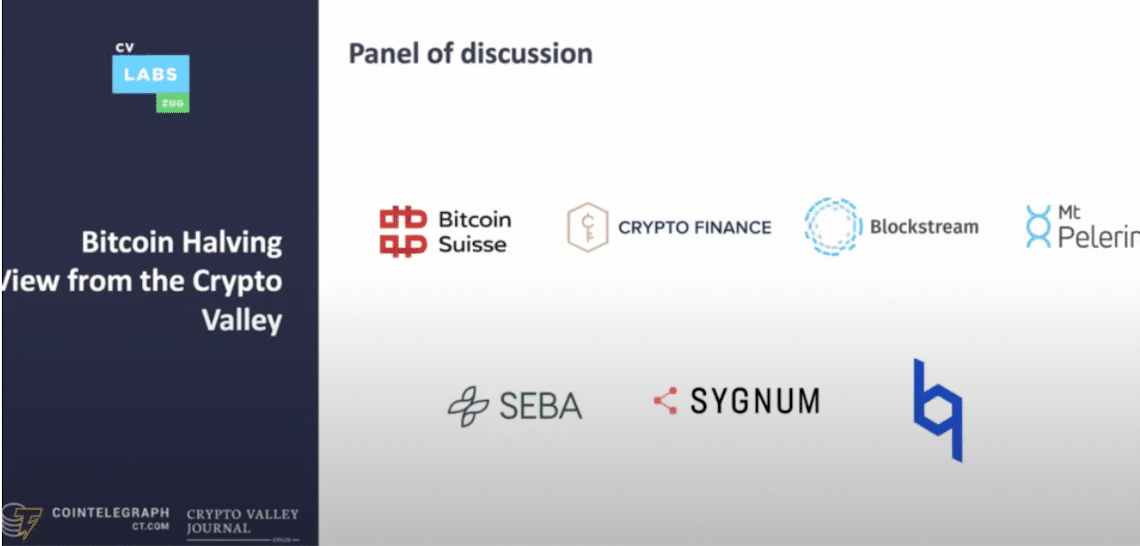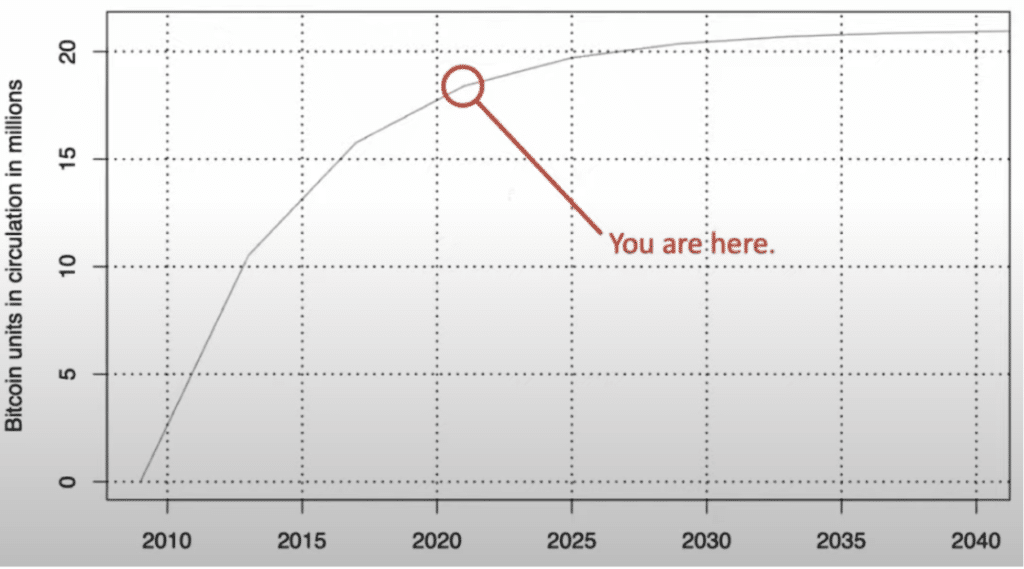
The event “Bitcoin Halving – View from the Crypto Valley” by our partner CVLabs was held on May 7th in the form of a webinar. Experts from the Valley answered the most urgent questions about the most important event.
The speakers offered an interesting contribution and informative explanations about the current Bitcoin Halving. Alexandre Juncker, Blockchain expert at Alpiq, led the discussion. The webinar was introduced by Prof. Dr. Fabian Schär, Professor at the University of Basel.
When it comes to Bitcoin Halving, there seems to be some misinformation circulating on “Crypto Twitter”. For example, users think that halving their Bitcoins would halve their Bitcoins. Thus F. Schär explains what exactly the Bitcoin Halving is.
Halving the Bitcoin Block Reward
When Bitcoin was created in 2009, the reward for “mining” was 50 Bitcoins (BTC) per block. In November 2012 it was 25 and in July 2016 it was 12.5 BTC. Now this reward is halved once again to 6.25 BTC per block created. This reward, in the form of newly created Bitcoins, is thus halved about every 4 years. The graph below shows the total amount of circulating Bitcoins, which flattens out after each halving.
This event therefore mainly affects the Bitcoin miners, as their input (electricity costs) remains the same, but their output (reward) is reduced. Schär also points to the relevance of the “Annual Growth Rate“, which falls below 1% after halving, which is very low compared to other assets/currencies. Although there is no economic reason to believe that the price of Bitcoin should rise due to the halving, many crypto-followers seem to suspect it. This assumption makes less sense according to Prof. Schär. Theoretically, the halving should already be priced in, since in the open market everyone has the same information. In practice, however, game theory comes into play. Here is a theoretical description:
If you want to buy an object which is known to be less frequent on day (t), why not buy it on day (t-1)? But if everyone buys on day (t-1), the purchase should take place at (t-2) to forestall the other buyers. However, if everyone buys at (t-2), one would have to start at (t-3). And so on.
This game-theoretical solution is called reverse induction and probably causes the Bitcoin price to rise rapidly before halving. In addition, there are the following potential factors: Uncertainty about the future of Bitcoin is lower than before and media coverage has increased significantly recently.
At the end of the introduction, F. Schär focused on mining efficiency and introduced the discussion with another theoretical consideration. If you can be more efficient tomorrow, why not start today? With this he addressed the topic of ASIC miners, who are mining much more efficiently these days than their predecessors and thus make the old hardware obsolete.
What short and medium term effects can be expected on mining?
Yves Longchamp, Head of Research at SEBA Bank AG, mentions the S17 Miner from Bitmain, which will replace the older generations – such as the S9 Miner – latest after halving. Only miners in regions where electricity is very cheap have the possibility to keep the old ASICs running profitably. Thus a large part of the inefficient mining devices will be eliminated from the business. In this context, Dr. Raffael Huber, analyst at Bitcoin Suisse AG, also discussed the so-called geographical redistribution of miners in regions where electricity is cheaper than 2.5 centimes per kilowatt hour.
Furthermore, Dr. Lewin Boehnke, Head of Research at Crypto Finance AG & CTO at Crypto Storage AG believes that the coming halving, cannot be compared with the previous ones. The industry has changed considerably. For example, there used to be numerous hobby miners. Today this scene is absolutely professional with huge mining farms or mining pools. It’s all about the break-even point of the miners. Boehnke therefore does not expect a collapse in Bitcoin network performance (hashrate).
Dr. Gorazd Ocvirk, Senior Vice President, Head of Fintech and DLT Services at Sygnum Bank, directs the focus to the miners’ perspective. These investors have long-term contracts with electricity providers and hardware manufacturers and, in the event of short-term unprofitability, they cannot stop their activities from one day to the next.
Does the profitability shock pose a threat to the security level of the network?
Dr. sc. ETH Christian Decker, Core Tech Engineer at Blockstream, who works on the lighting network and is researching scalability solutions, believes that if the hashrate were to drop, the time between blocks would increase. This is due to the fact that the difficulty adjustment is only done every 2 weeks (2016 blocks). The chance that hackers could carry out a 51% attack is therefore a little higher. However, this will still be difficult, as it would still require an enormous amount of hash power. Decker adds that a working Bitcoin is too economical to be hacked. Due to the efficient miners and the current Bitcoin price, there is no pressure to sell from the miners. This was different two months ago when the Bitcoin price dropped below $4,000. At this price level, most miners were able to cover their electricity costs, but were unable to make a profit.
Arnaud Salomon, CEO of Mt. Pelerin, took up this issue with the stock-to-flow model. 10 years ago, the power was still in the hands of the miners, because the stock was small, but there was a large flow in the market. This power is now shifting away from the miners. They could stop the sale of newly produced Bitcoins – if they have the necessary liquidity – and thus push the price up in the short term. But because there are enough Bitcoins in circulation today (over 18.3 out of a total of 21 million), this has less impact than a few years ago.
Has the historic time come for Bitcoin to earn its place under the sun?
Finally, there was a discussion about how the future of Bitcoin could look like after the third halving. To take one thing away, the economy around the existing FIAT currencies is not comparable to Bitcoin’s. We should not forget why there are central banks. They were established in the 1920s when money was not flexible enough. This led to positive volatility and elasticity. But the intervention of central banks in the economy can also cause problems, as we have seen in recent financial crises. However, Bitcoin does not seem to be perceived as a direct competitor of central banks. Rather, the crypto-currency, like gold, could spur them to work more disciplined on solutions.
The halving draws attention to the suitability of today’s FIAT currencies in terms of value preservation. It is noted that there is an increased interest in gold or Bitcoin as a portfolio diversification and inflation protection.
Many aspects of Bitcoin’s future remain uncertain, according to the panel. However, one thing is clear, the price of Bitcoin is likely to remain volatile for some time. One reason for this is that 150 billion dollars in market capitalization still represents very little compared to established asset classes. For mass adaptation, the network also needs to have increased scalability. In future, this could be achieved by so-called Layer 2 (offchain) solutions such as the “Lightning Network”.
If there are still questions about halving, we recommend our summary of the most important information.
The whole webinar can be viewed here:


